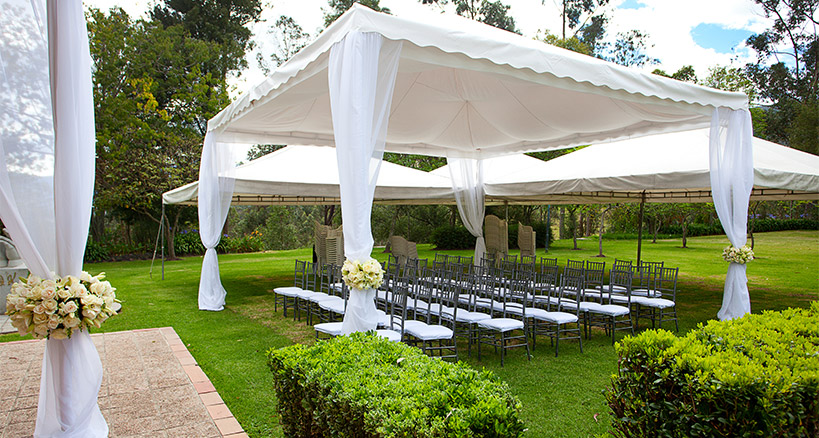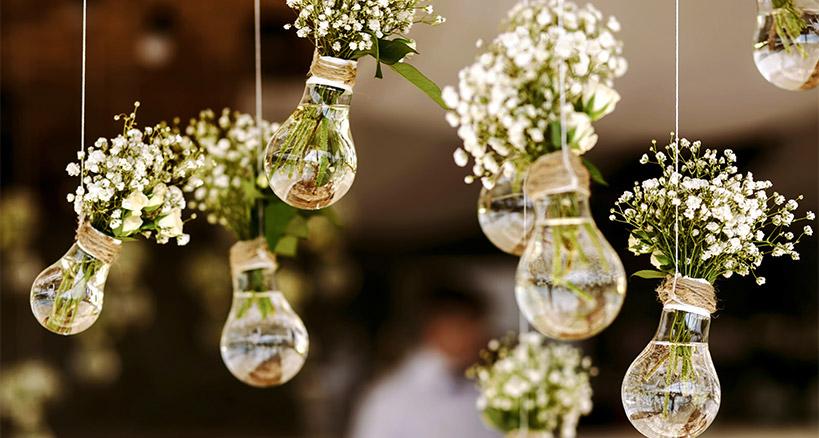
Help Your Client Choose Between DIY and Professional Event Planning
As a caterer/event planner you have to balance your skills as a chef with your business acumen. Booking new business is obviously an important aspect of developing your company, but it’s particularly complicated in today’s event industry where costs are rising and clients are often looking for ways to cut back on expenses. Do-it-yourself (DIY) events are becoming a popular route for budget-conscious people, but it’s up to the business-savvy party planner to convince potential clients that some things are better left to the professionals.
Let the Client Arrive at the Right Decision
In the Harvard Business Review, author Michael Schrage explains how you can guide clients in the direction of a smart decision by allowing them to persuade themselves. Professional service firms, he says, should look for ways not just to better communicate the value of their work, but to give people the tools that let them sell themselves on the firm’s value. When a potential client is on the fence regarding professional services vs DIY, the hard sell is not the way to go. Don’t shower the customer with ominous warnings and bleak scenarios. Present all the angles of the upcoming event, along with something as simple as a colorful, well-organized, self-explanatory cost-comparison chart, and watch your clients draw the right conclusions by themselves.
Explain the Costs – Financial, Physical, and Emotional – of DIY
Frugal clients often don’t understand what’s entailed in arranging an event. It’s hard for them to see beyond the dollars and cents, and even harder for them to anticipate that, although saving money is a priority, they can quickly find themselves in over their heads. While it’s one thing for a client to take on DIY centerpieces or place cards, other major services such as design, music, and catering are another story altogether and they are best done by those who specialize in such services. Your goal should be to ease your potential clients in the right direction, showing them the importance of booking professional services (without appearing self-interested or money-hungry).
Clients often think that DIY is an easy and affordable alternative, but often it can be nearly as pricey as a professional job, and at least double the effort. Professional caterers have access to exclusive resources that can often save clients on the final cost of the event. A professional can ensure that things are done in a timely manner, and as cost-effectively as possible.
Similarly, the weeks leading up to the event date can be extremely busy, stressful, and pressurized. Clients may believe that they can juggle all the elements of a successful event and still enjoy themselves, but the pressure of a DIY event is often overwhelming. By the time the event rolls around, do-it-yourselfers are often too strung out to have an enjoyable time, and usually find themselves tending to details during the event itself. By leaving the “heavy lifting” to the professionals – or at least most of it – customers can be guests instead of party planners, allowing maximum enjoyment and minimum stress.
The Viability of DIY: Bits and Pieces
Even a well-prepared presentation on your part may not convince the most budget-conscious client to put the entire event in your hands… and that’s OK. When you see that that’s the direction the conversation is taking, go with the flow. Explain that it is alright to choose DIY bits and pieces of an event, but that it is still advisable for the client to hire a professional to do the rest. Again, charts and lists are helpful: a list of all jobs and elements involved in carrying out a successful event – ranked by effort and pressure (not price) – could help your client prioritize what jobs she is willing to hand over and which tasks she can realistically handle herself. Looking at the big picture should help clients convince themselves that they probably want to hire you to coordinate all the vendors, for instance, but that they can handle making the party favors and figuring out the seating plan.

Flowers and Music Arrangements: More Complicated than They Seem
Flowers and music – especially at a big event, like a wedding – should be at the top of the list of things clients should not tackle entirely by themselves. Unless there is a professional florist in the family, clients should not try to provide all their own flowers and décor. If the client is stressed out by the price of floral arrangements, explain that part of this expense can be offset by DIY flower-less centerpieces – floating candles in unique vases, for instance – which can be made well in advance of the event. But explain, as well, that there is no way a bride will have time to make her own wedding bouquet, or six more for the bridesmaids, the day before, or the day of her wedding. Unless your client is stubbornly determined to do it herself, this is something she should hand over to you (who will, in turn, allocate it to a professional florist). If the client can set a budget – and you can commit to sticking to it – it’s a win-win situation: no stress, no fuss, and beautiful results.
Unless your client’s brother is a band leader or her niece is a professional DJ, music is another area that your clients should not handle on their own. They need to understand that, no matter what type of event, if dancing is involved, it’s not enough to set up a playlist and stick a phone into an iPod dock. (If there is no dancing, and music is just being played in the background, the rules are more lax and there is room for DIY.) Dance music has to be coordinated and steered, and the people at the helm should not be the celebrants themselves.
Venue and Lighting is Better Left to the Pros
Even if your client is opting out of the expense of a hall – in favor of, say, erecting a tent in a backyard – they should understand the effort involved. Tents may be less expensive, and they are indeed beautiful, but they require set-up and maintenance; for a DIY-er, it will take a lot of time and people to get it done. Once that tent goes up, they will have to be ready with a decorating team to put lights and décor in place. The money a DIY client may save decorating and lighting a venue may be totally disproportionate to the potential aggravation and obstacles.
DIY Catering: The Biggest Decision
When the time comes to discuss the pros and cons of DIY catering with your client, you should have no problem convincing even the staunchest DIY-er that this area is best left to the pros. One of the most surprising things about DIY catering is that it isn’t automatically less expensive. For caterers it requires dishes and equipment that they have on hand; but the non-professional will have to rent, buy, or borrow — not to mention clean— this very equipment. Food is usually the least expensive part of the shopping list, and you will need to explain to your DIY clients that they will have to rent or purchase cutlery, plates, cups, napkins, and serving pieces, and that this will take up as much as half of their budget.
IF a person chooses to do their own catering, your clients probably would not do it all themselves, but would need to find an organized and methodical friend or relative who can manage all the details such as planning, shopping, cooking, and managing the event. If they hesitate or balk at this idea, it’s time for them to consider a more professional approach.
They would also need added helpers for serving. Servers are the key at any event and it’s a category no one can afford to skimp on. The general rule is one server per 10 guests for a seated/plated meal. Someone has to coordinate all this – and that person will not be able to enjoy the event. So, it’s important that your client understands that even if there are DIY elements to their event, they should leave the service staff to you. They might at first harbor a hope that they can get away with using friends or relatives as bartenders and waiters, but don’t allow them to disillusion themselves into thinking that their event will run smoothly.
Final Question: Will This Be Fun?
After you discuss the pros and cons of DIY with your clients, tell them to close their eyes and ask themselves: Do you think DIY still sounds like fun? If they admit that it does not, then 100% DIY is not the route for them. Explain one last time that by hiring you to manage their affair – while they still arrange many of the easier and more stress-free elements themselves – they can enjoy themselves and save money at the same time. Creating a successful event is not an all-or-nothing proposition; when client and event manager work together, the results can exceed everyone’s expectations.
Thanks for such an amazing article with us. Keep share such type of articles and it may helpful for those who are looking for event planners